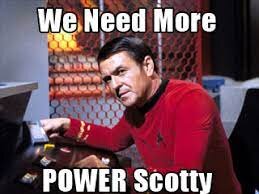Arizona is a natural fit for solar energy. We are home to numerous large scale solar power plants. The newest ones not only generate power during daylight hours but store electricity that was made during the daytime , to be released in the early evening hours during peak demand hours. We also have some free standing electrical storage buildings that are basically just big lithium ion battery facilities, for storing surplus power to be released in the evening hours.
View attachment 231978View attachment 231980
Solar panels are everywhere you look around here, schools and commercial buildings place solar panels on the roof tops of covered parking,
View attachment 231979
And it seems that solar panels are on the roof of every other house you see,
View attachment 231981
I am not sold on the value of solar panels on the roofs of houses.
I see them as having a number of problems.
1. They are promoted as drastically reducing your electric bill and that the surplus electricity your panels produce can be sold to the electric company. While technically that is true, they pay Pennie’s on the dollar for what they would charge. Plus, if you don’t buy enough electricity from the power company that charge you a fee for maintenance of the grid. Most people break even or save a small amount, the payment for the panels equaling the cost of electricity.
2. I was told by a guy that used to be in the solar panel business that they talk people into placing way more panels on your roof than you actually need for your home.
3. Most people do not own the solar panels, they are 30 year leases. This is problematic if you want to sell your home, you have to talk a prospective buyer into assuming your lease, or you have to pay off the panels outright which is very expensive.
4. If you ever need to have a leaky roof re done, you have to pay for the panels to be removed and reinstalled, which is very expensive.
5. They are ugly on your roof and the amount of electrical conduit and circuit boxes and meters they hang in the side of your house is ridiculous. And lastly pigeons will nest under them, so you have to call out a specialty company to install bird netting or wire screen all around the perimeter of the panels.
But other than on household roof tops, I’m a big fan of solar energy.


